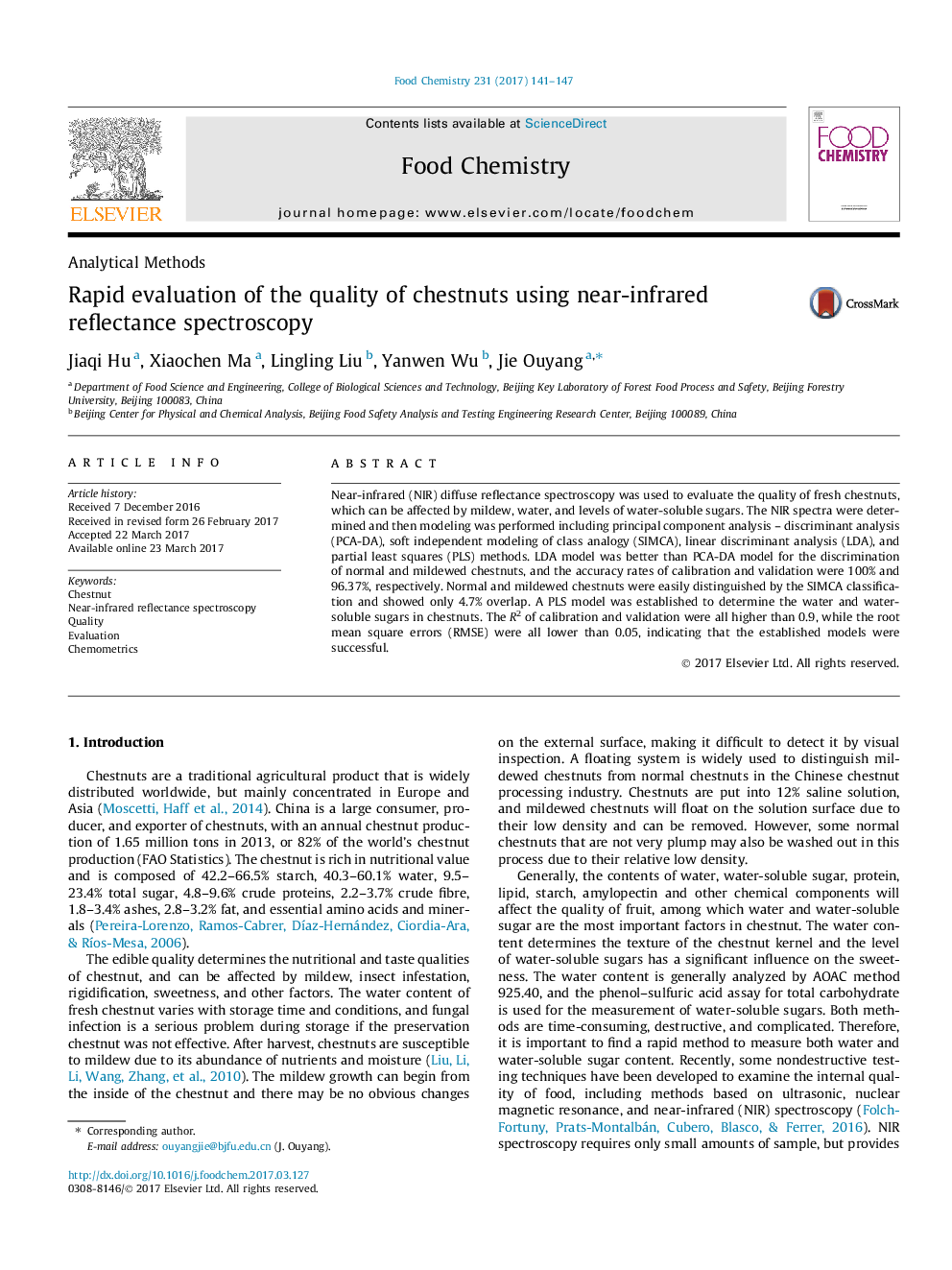| Article ID | Journal | Published Year | Pages | File Type |
|---|---|---|---|---|
| 5132907 | Food Chemistry | 2017 | 7 Pages |
â¢The quality of chestnuts was rapidly evaluated using NIR spectroscopy.â¢LDA model was successful for the discrimination of mildewed chestnuts.â¢Contents of water and water-soluble sugars were rapid analyzed using PLS.
Near-infrared (NIR) diffuse reflectance spectroscopy was used to evaluate the quality of fresh chestnuts, which can be affected by mildew, water, and levels of water-soluble sugars. The NIR spectra were determined and then modeling was performed including principal component analysis - discriminant analysis (PCA-DA), soft independent modeling of class analogy (SIMCA), linear discriminant analysis (LDA), and partial least squares (PLS) methods. LDA model was better than PCA-DA model for the discrimination of normal and mildewed chestnuts, and the accuracy rates of calibration and validation were 100% and 96.37%, respectively. Normal and mildewed chestnuts were easily distinguished by the SIMCA classification and showed only 4.7% overlap. A PLS model was established to determine the water and water-soluble sugars in chestnuts. The R2 of calibration and validation were all higher than 0.9, while the root mean square errors (RMSE) were all lower than 0.05, indicating that the established models were successful.
